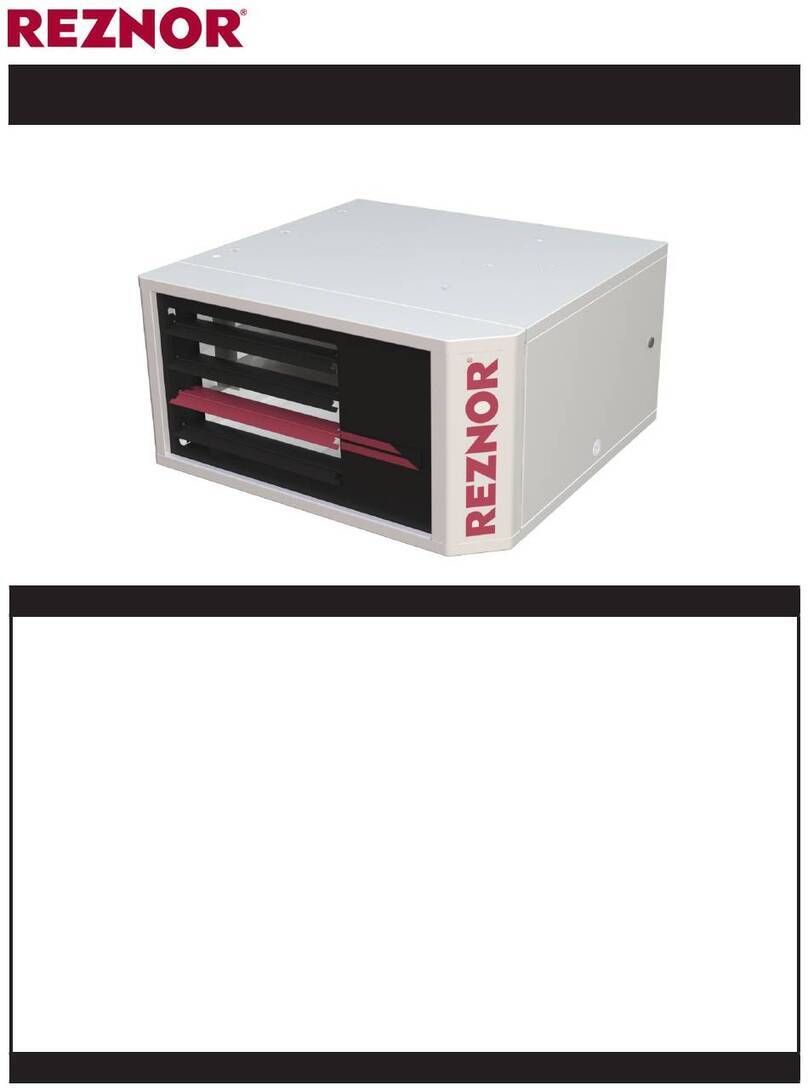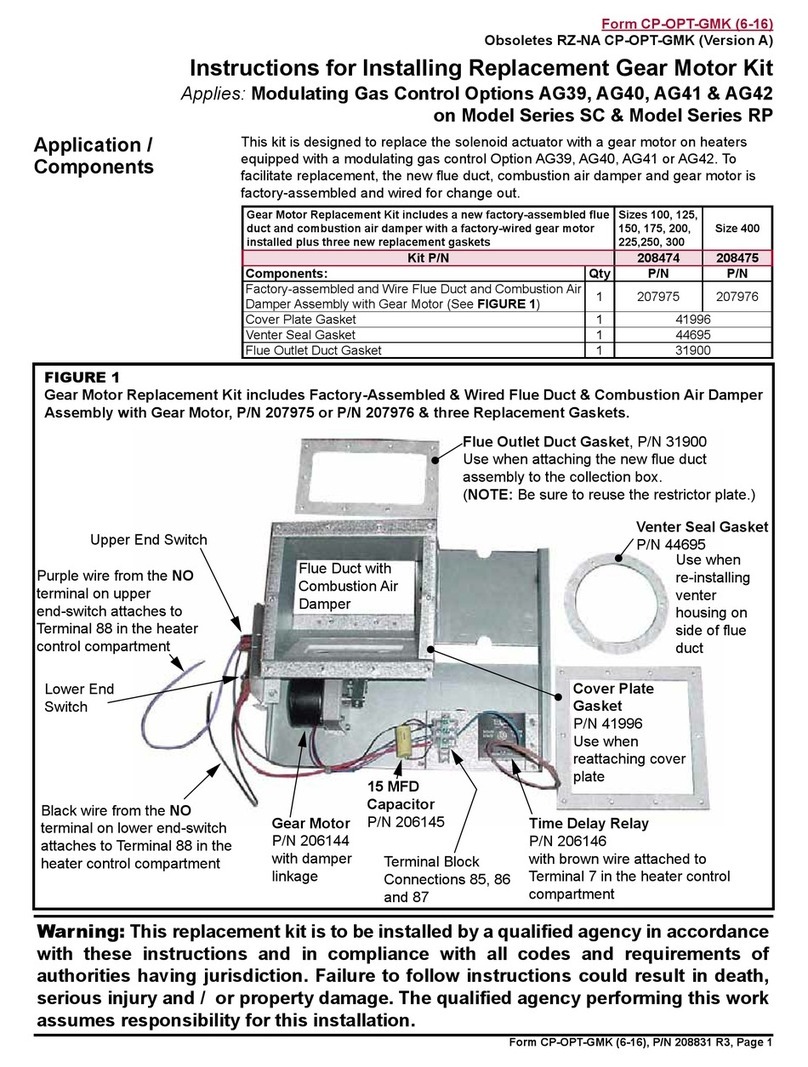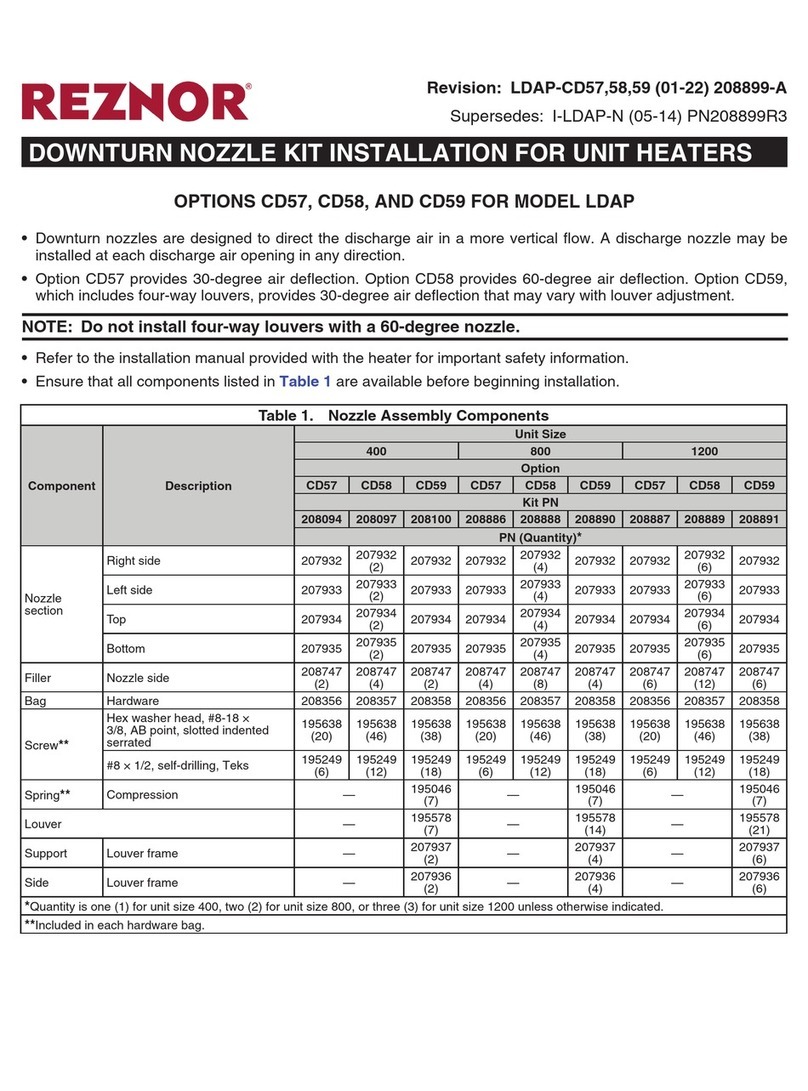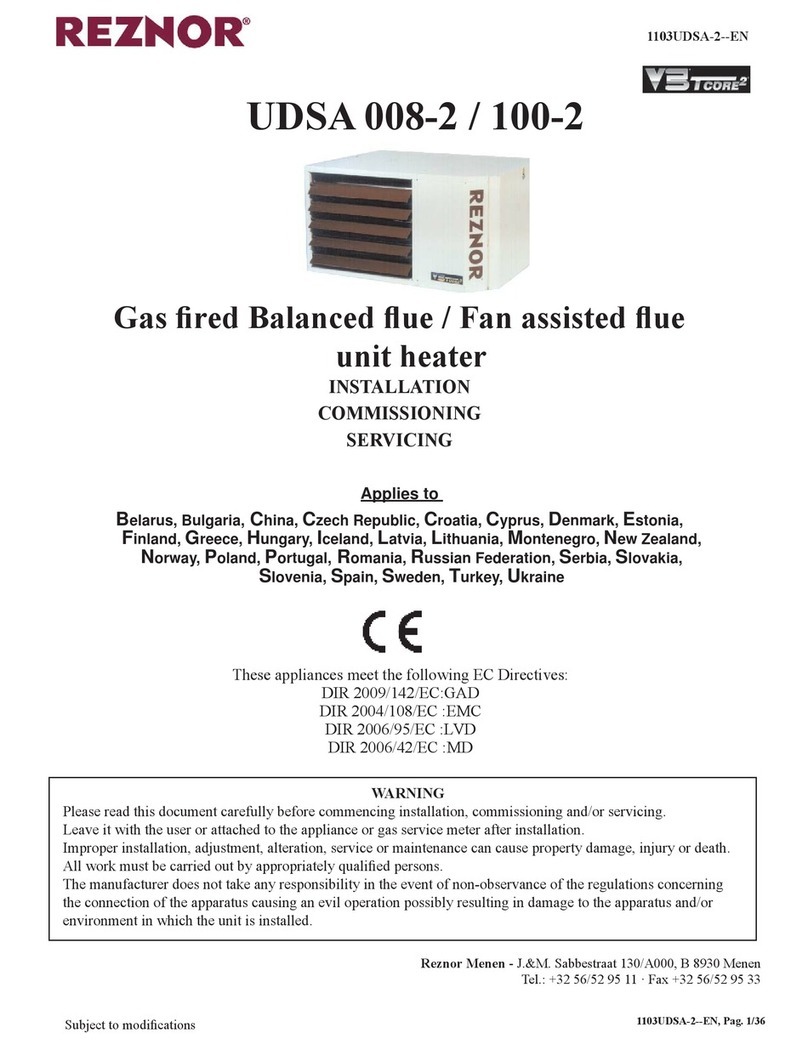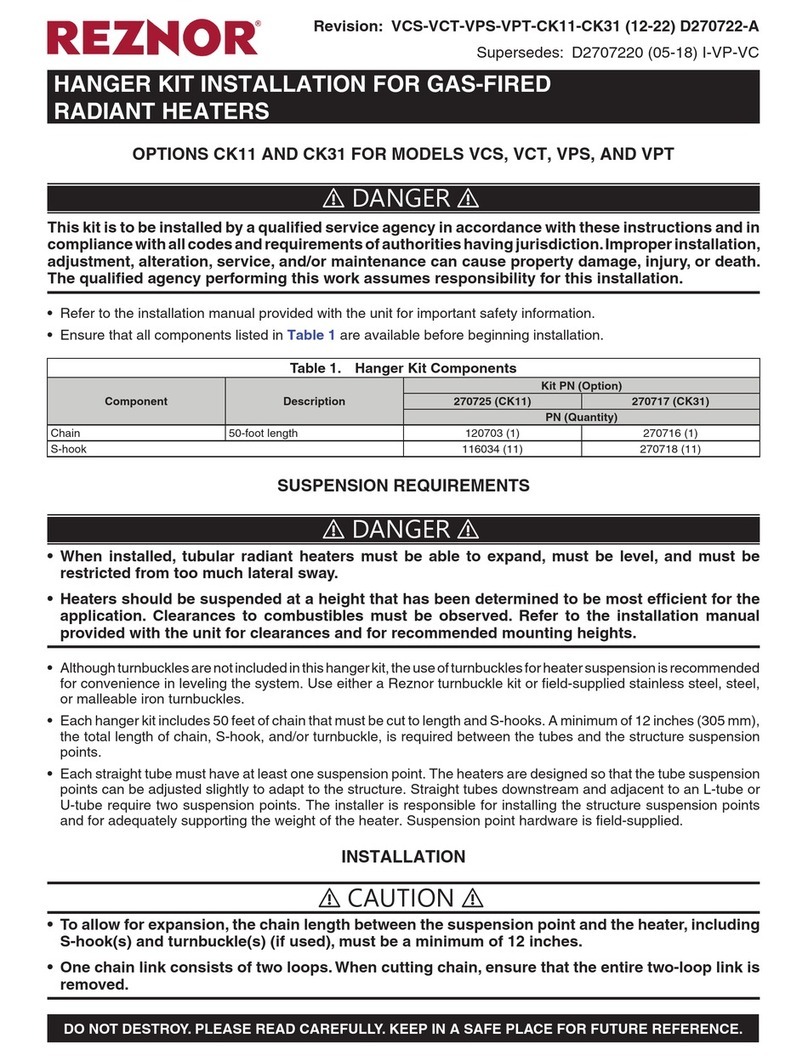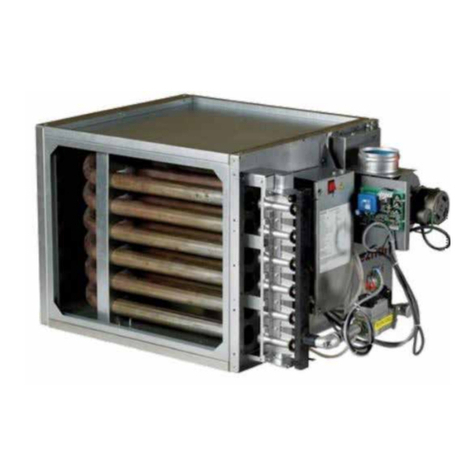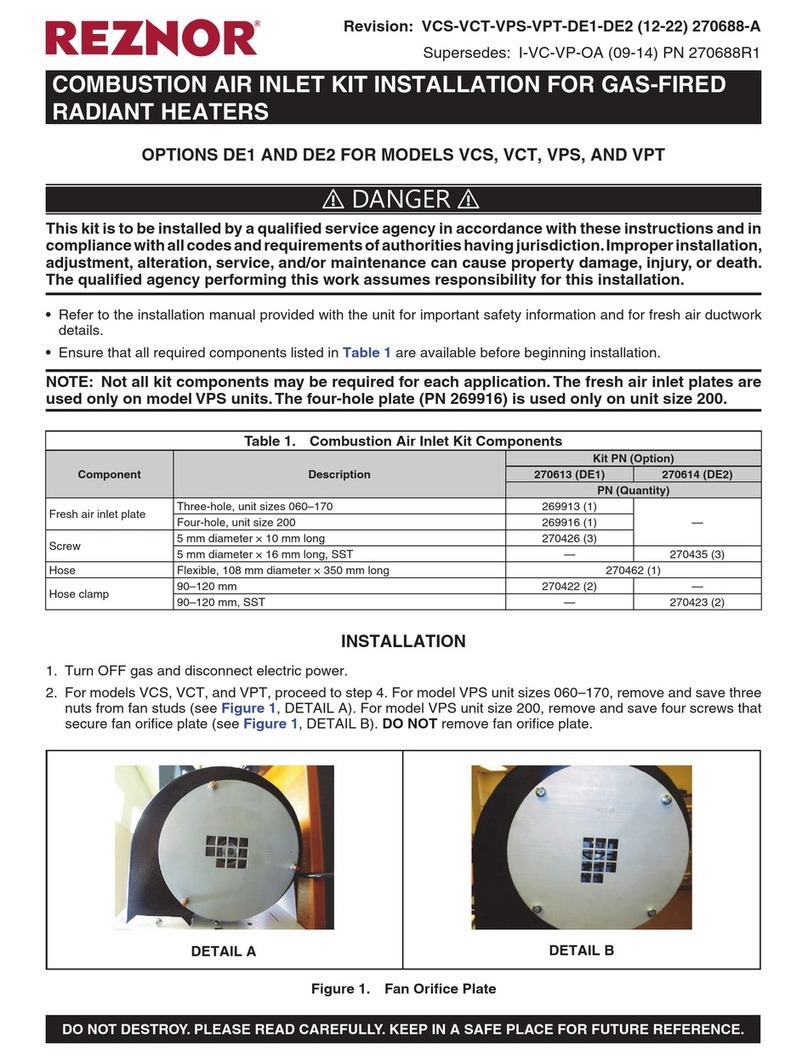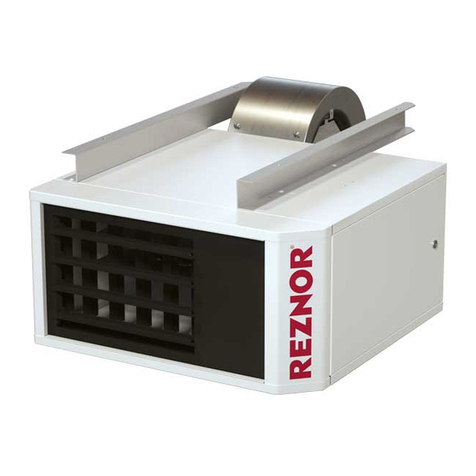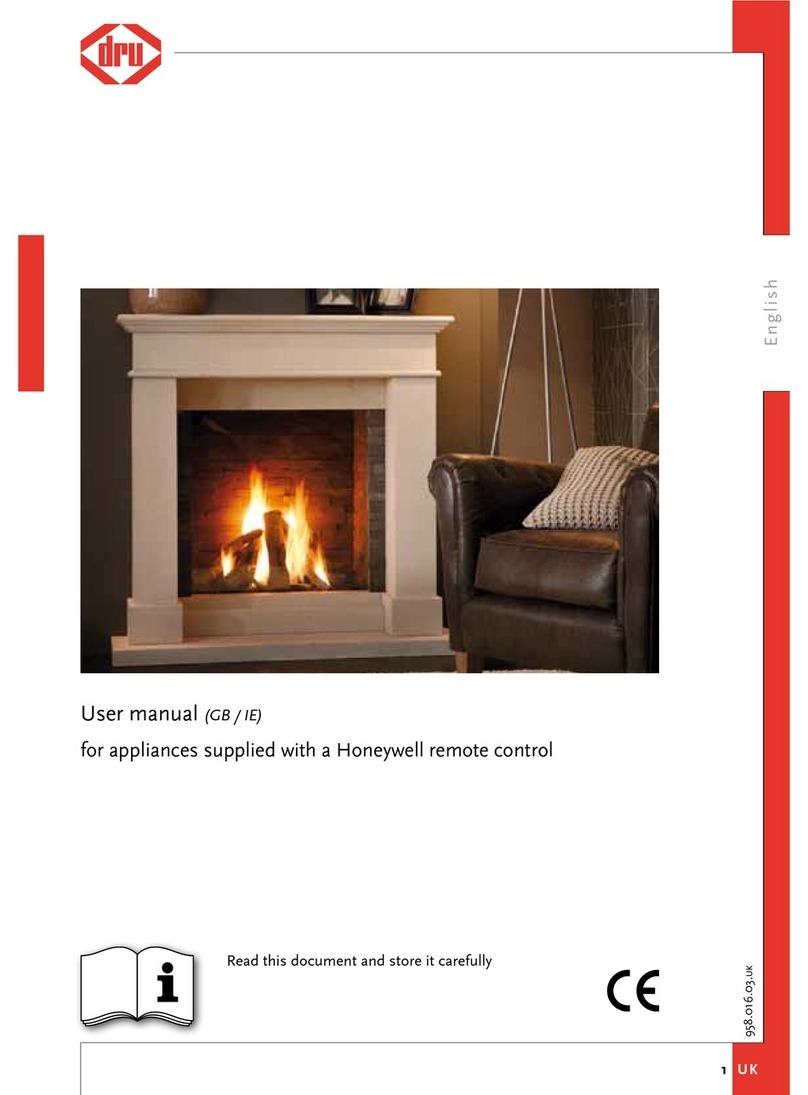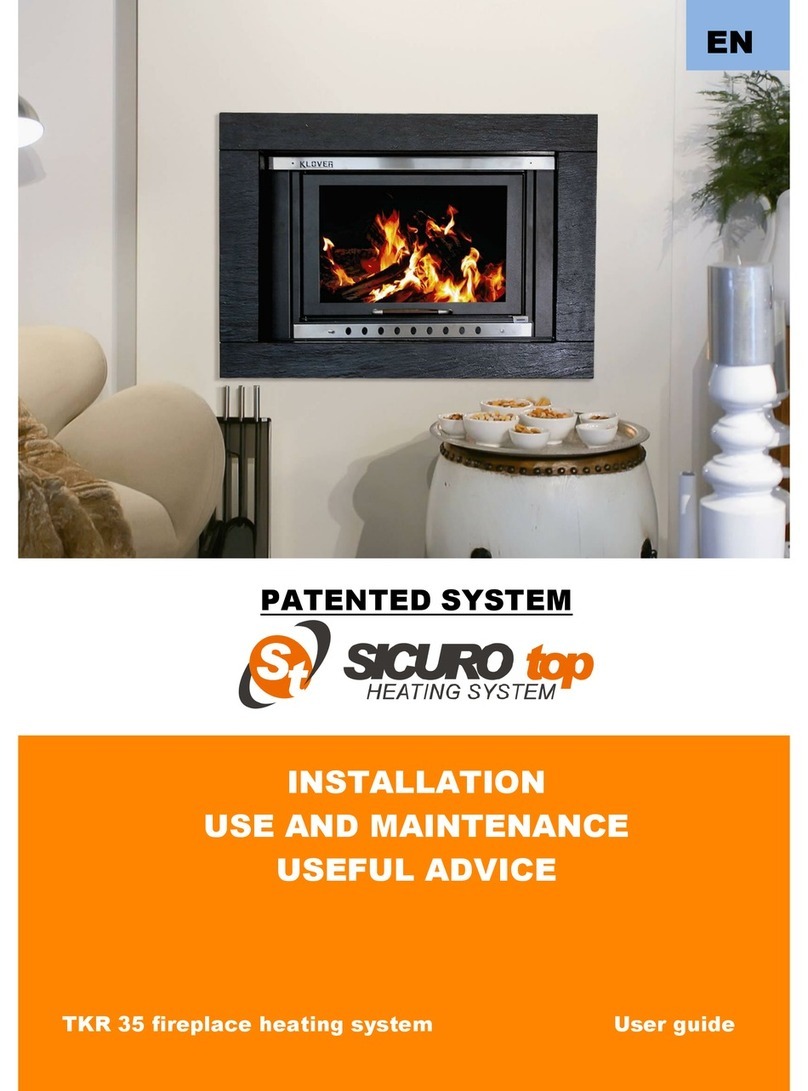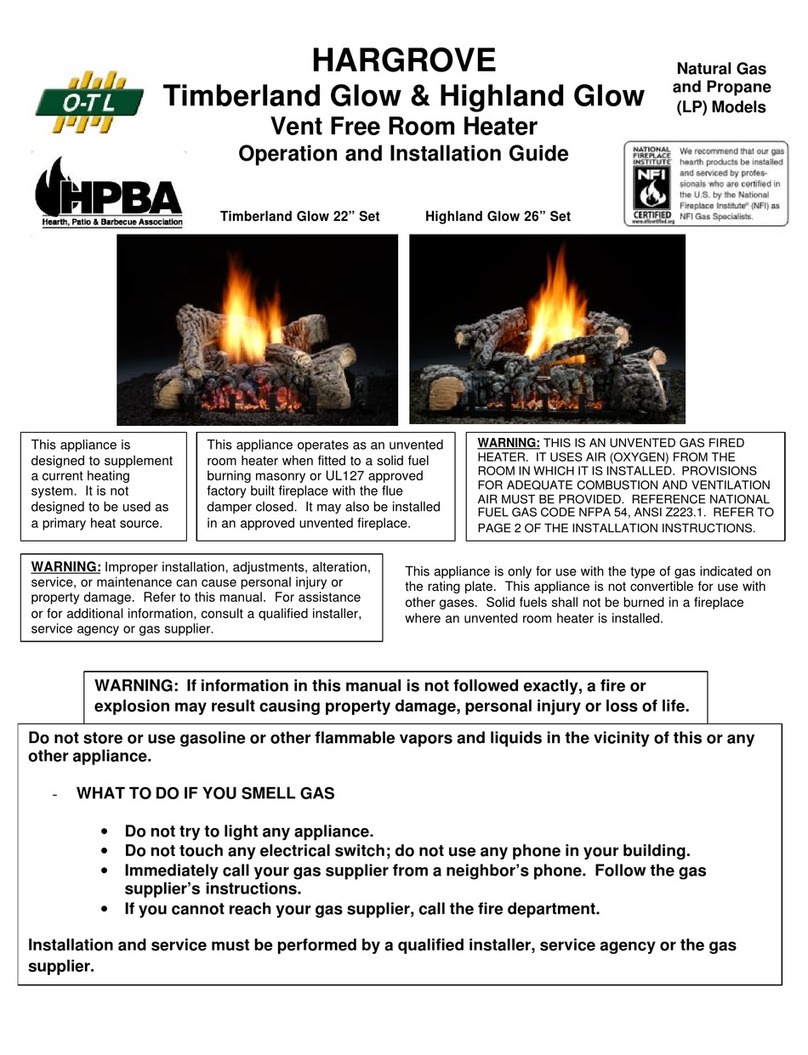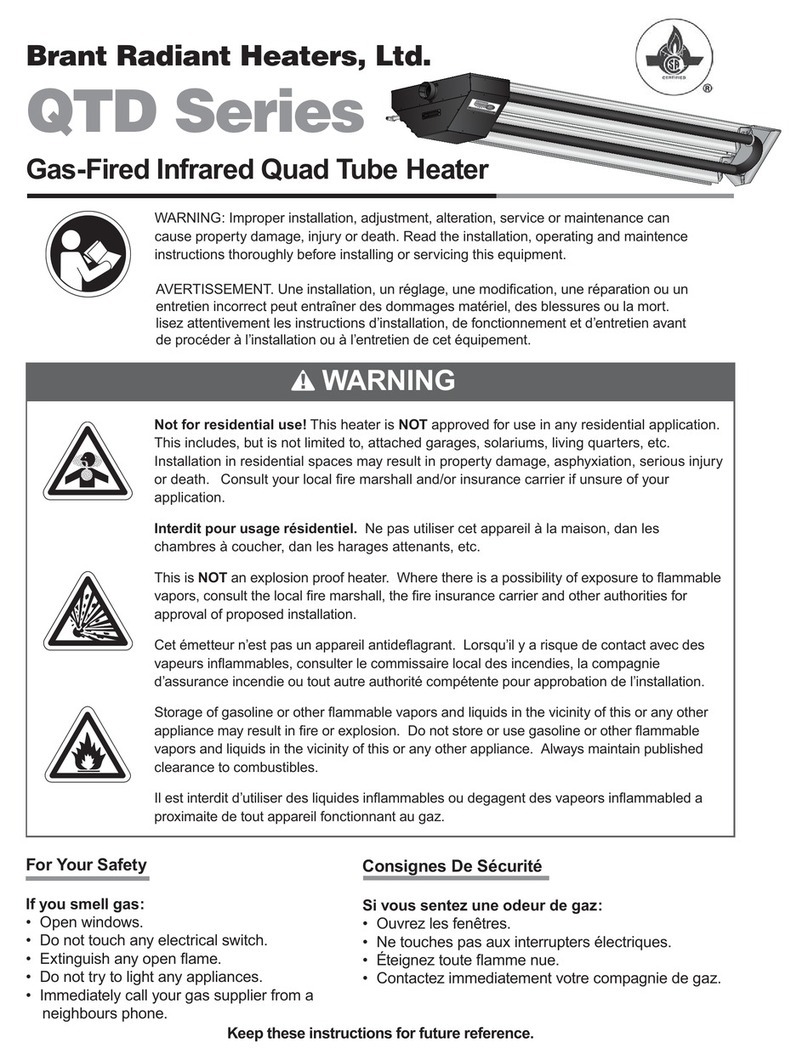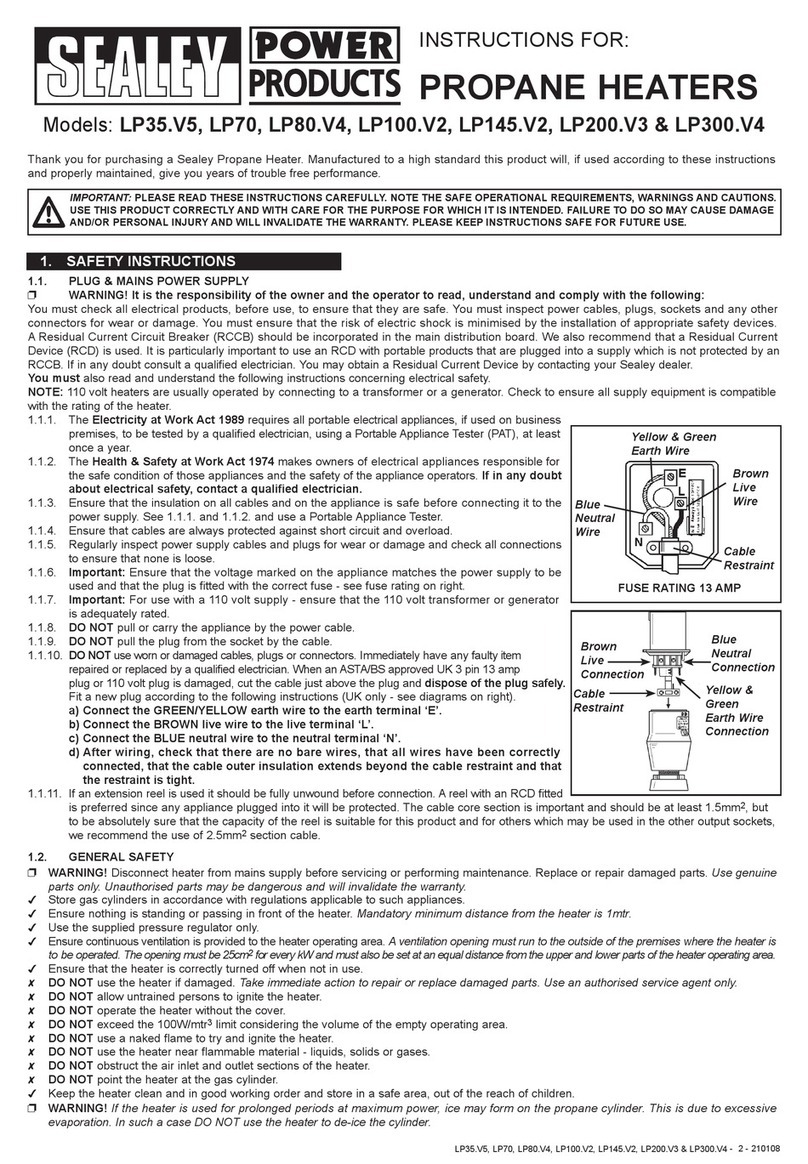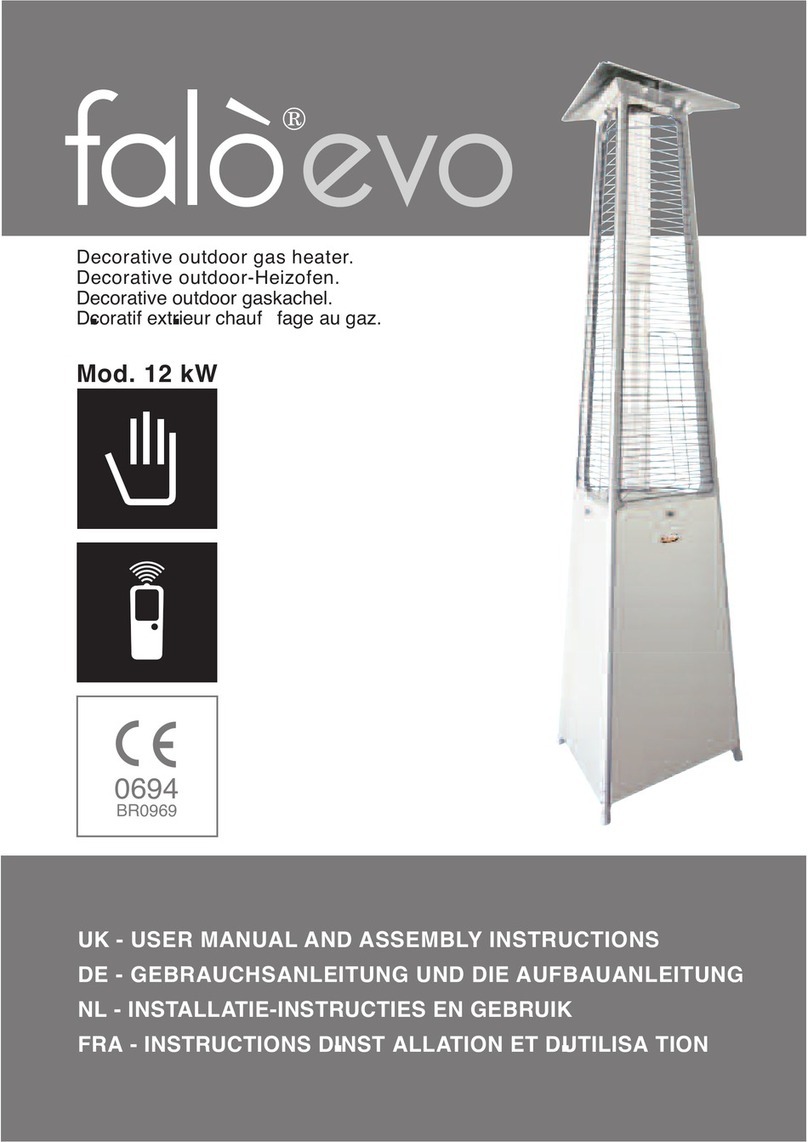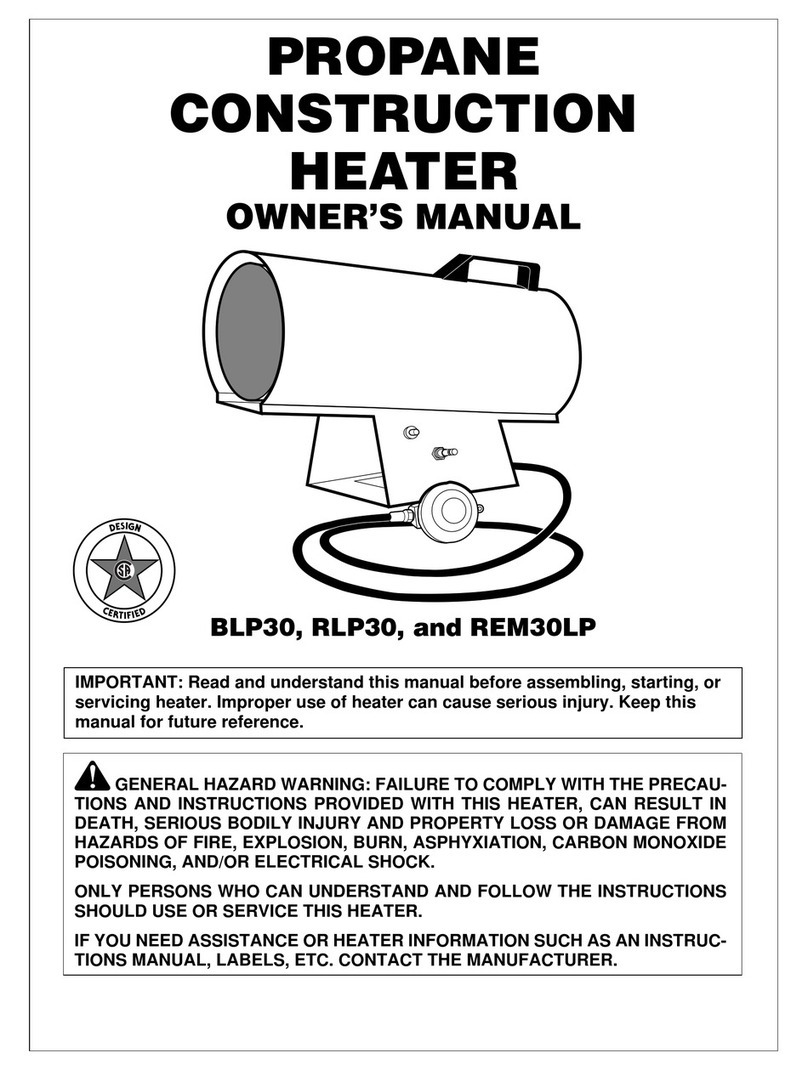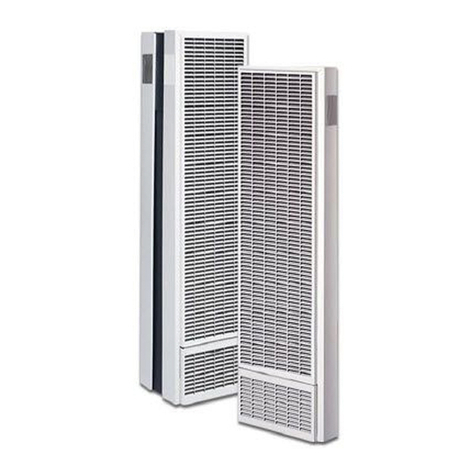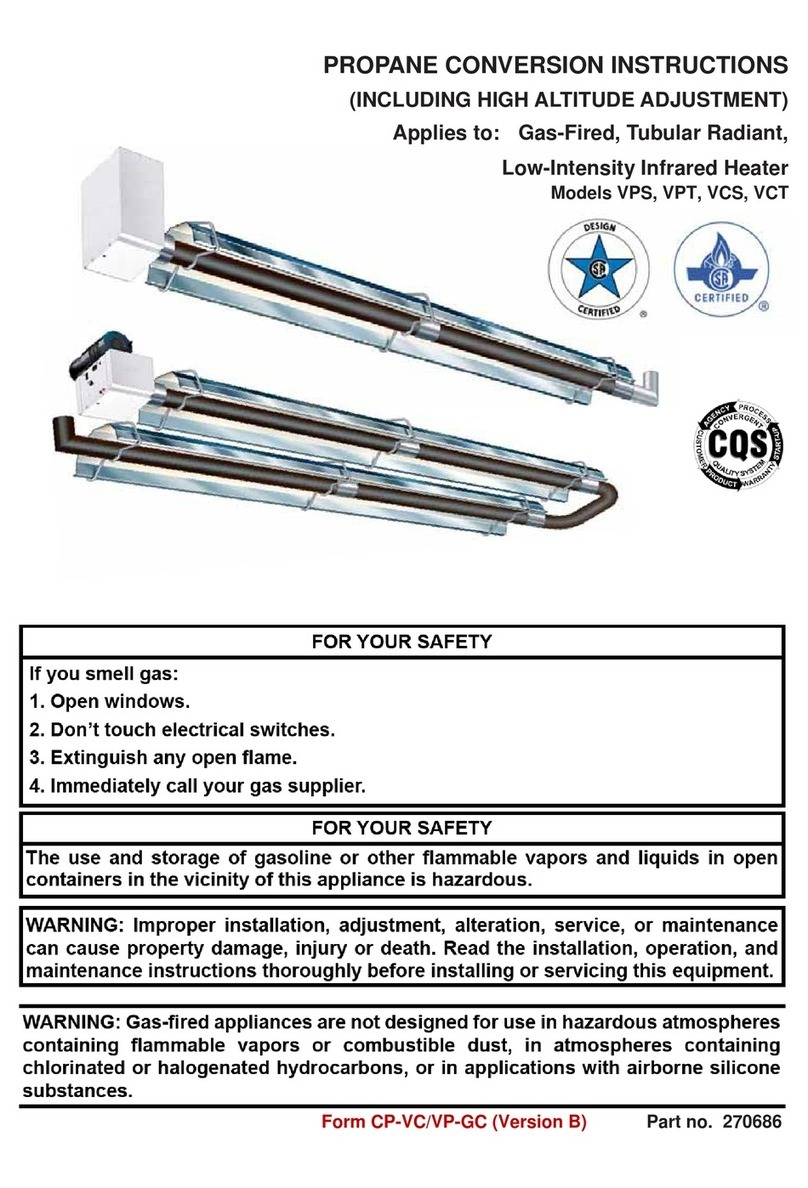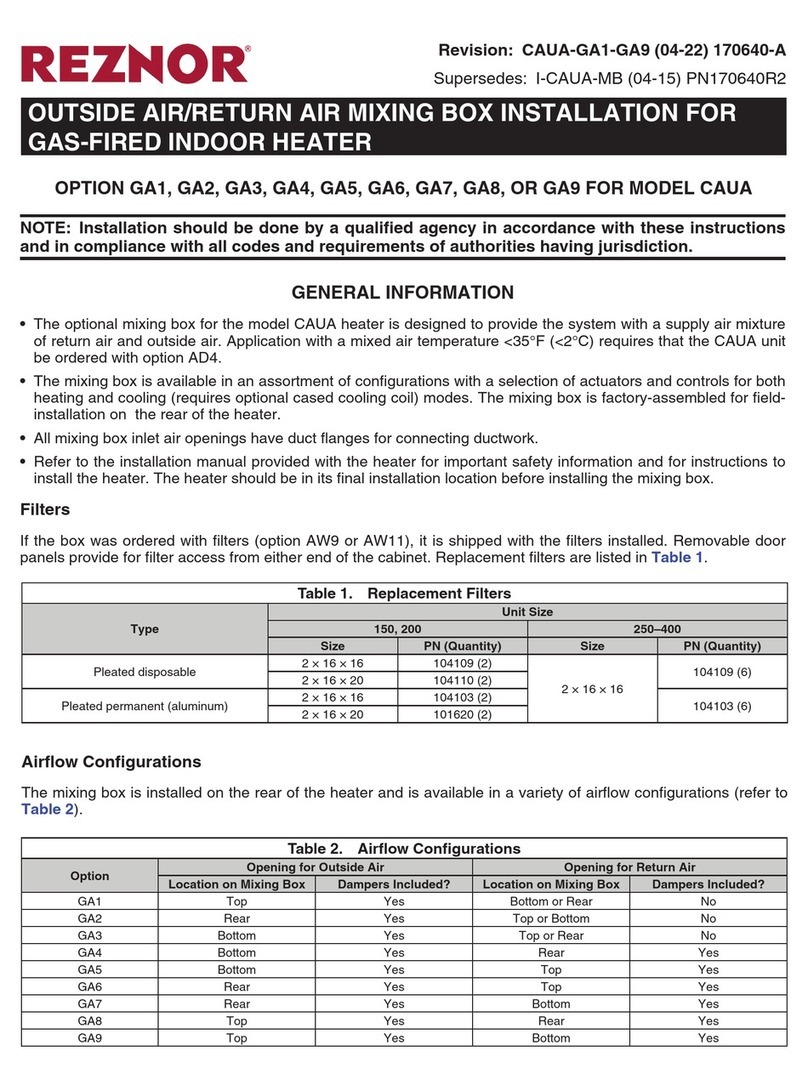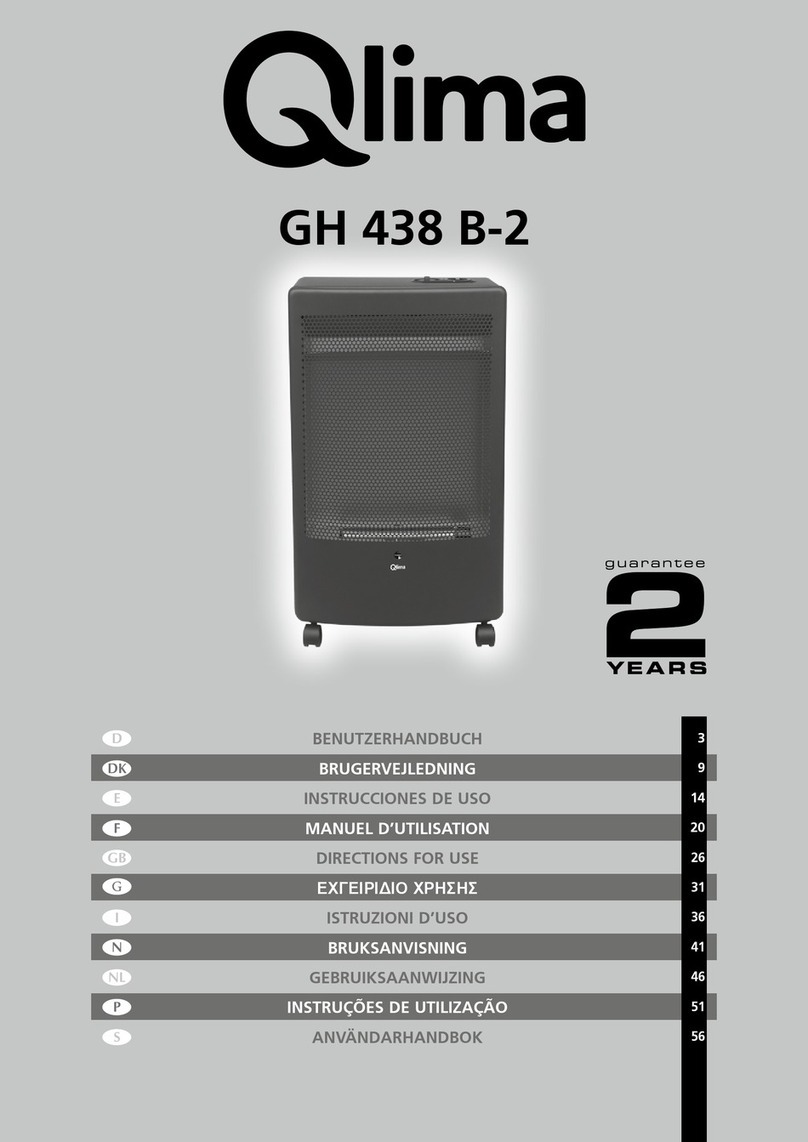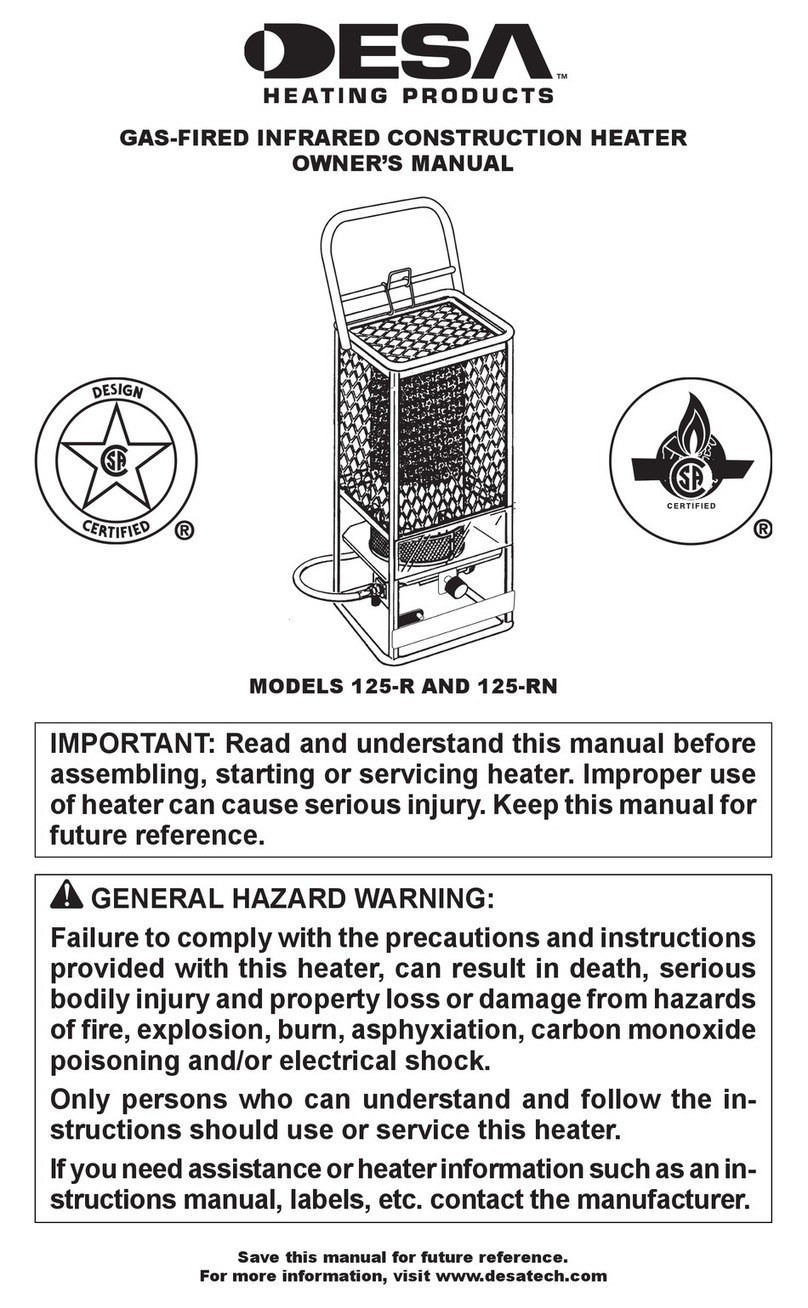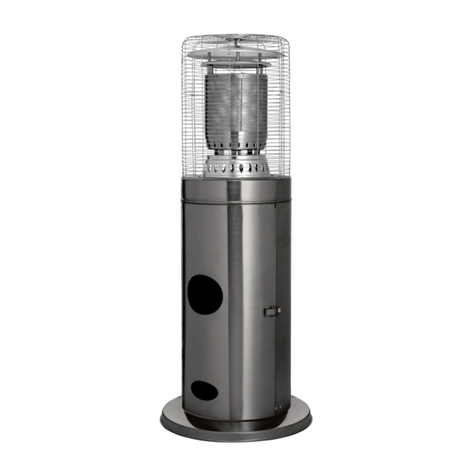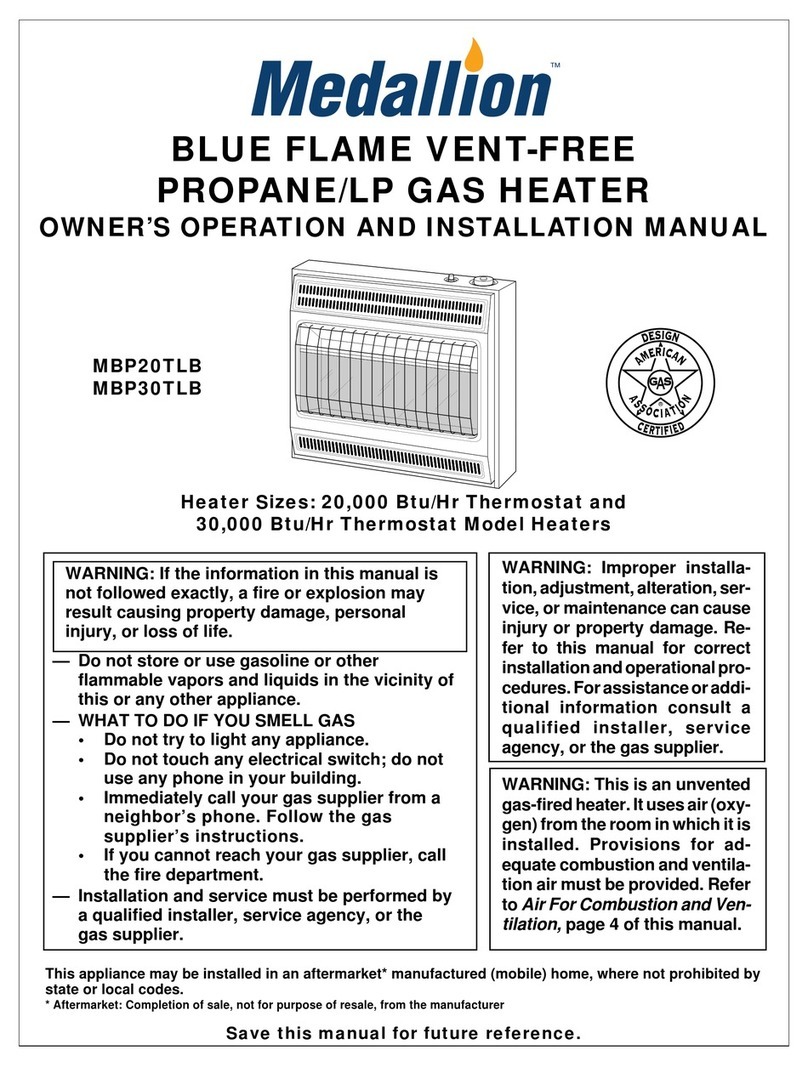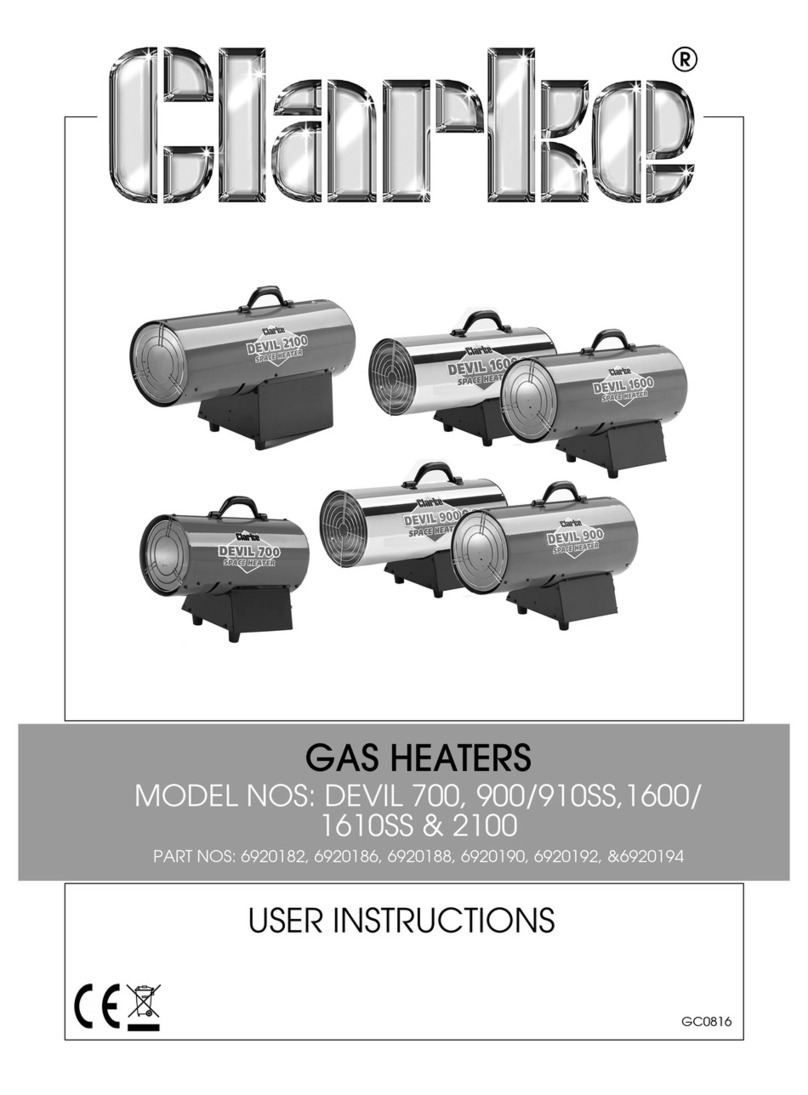
LCSC-3E--EN 3/40
single phase is required.
Heaters are approved for:
Type C12 horizontal vent for balanced-flue
heaters;
Type C32 vertical vent for balanced-flue
heaters;
Type B 22 vertical vent;
When the external control calls for heat, an
electronic control begins the ignition sequence
to provide for a safe start..
About 30 seconds after the call for heat, the fan
will begin circulating warm air. The electronic
control will supervise the flame during the entire
heating cycle to ensure safe operation.
When the required room temperature is
reached, the main burner will shut down leaving
the fan running to cool down the heat
exchanger. After approximately 45 seconds, the
fan delay relay will turn off the fan.
1.2 Warranty: Warranty is void if:
TECHNICAL DATA
2.1 Specifications
Table 1a : Technical data
20 30 45 60 75 100
Comb. Air & Flue Type B (1)
Comb. Air & Flue Type C (1)
Connection colars mm 100 100 130 130 130 130
Heat inputs Hs kW 26,42 31,63 54,38 73,25 87,85 114,87
Heat inputs Hi kW 23,80 28,50 49,00 66,00 79,15 103,50
Heat output kW 21,82 25,99 44,64 60,92 73,13 94,50
Thermal efficiency % 91,70 91,20 91,10 92,30 92,39 91,30
Gas consumption G20 m3/h 2,52 3,02 5,19 6,98 8,38 11,19
Gas consumption G31 kg/h 1,86 2,22 3,82 5,15 6,17 8,24
Gas pipe connection (2) inch
ESP MIN Press Pa 50 50 50 100 150 100
ESP MAX Press Pa 200 300 200 200 350 300
Air flow measured m3/h 2248 2741 4023 5573 7079 8068
Temperature rise (3) K 28 28 32 32 30 34
Electrical service (protection IP20) 400V 3P
50Hz
Blower electrical rating W 660 1250 1410 1700 3070 3200
Total electrical rating W 770 1370 1530 1810 3180 3320
Blower Weight kg 14,5 20,5 27 26 41 45
Unit Weight kg 54 55,8 87 99 109 155
Total Weight kg 68,5 76,3 114 125 150 200
230/240V 1N 50Hz 230/240V 1N 50Hz
LCSC-3E
B22P
C12, C32, C42, C82
½" ¾"
a) LCSC-3E heaters are installed in atmospheres containing flammable vapors or atmospheres
containing chlorinated or halogenated hydrocarbons or atmospheres containing any silicone,
aluminum oxide, etc., that adheres to spark ignition flame sensing probes.
b) The installation is not in accordance with these instructions.
2
(1) Gas appliance Classifications for approved venting methods based on CEN report CR 1749:2001.
(2) There is a difference between the gas connection diameter and the diameter of the supply line. Always use the most
adequate diameter of the supply line to minimize the pressure drop through the gas pipes – if necessary, reduce the
diameter of the supply line at the inlet of the unit.
(3) Figure for isothermal conditions.
